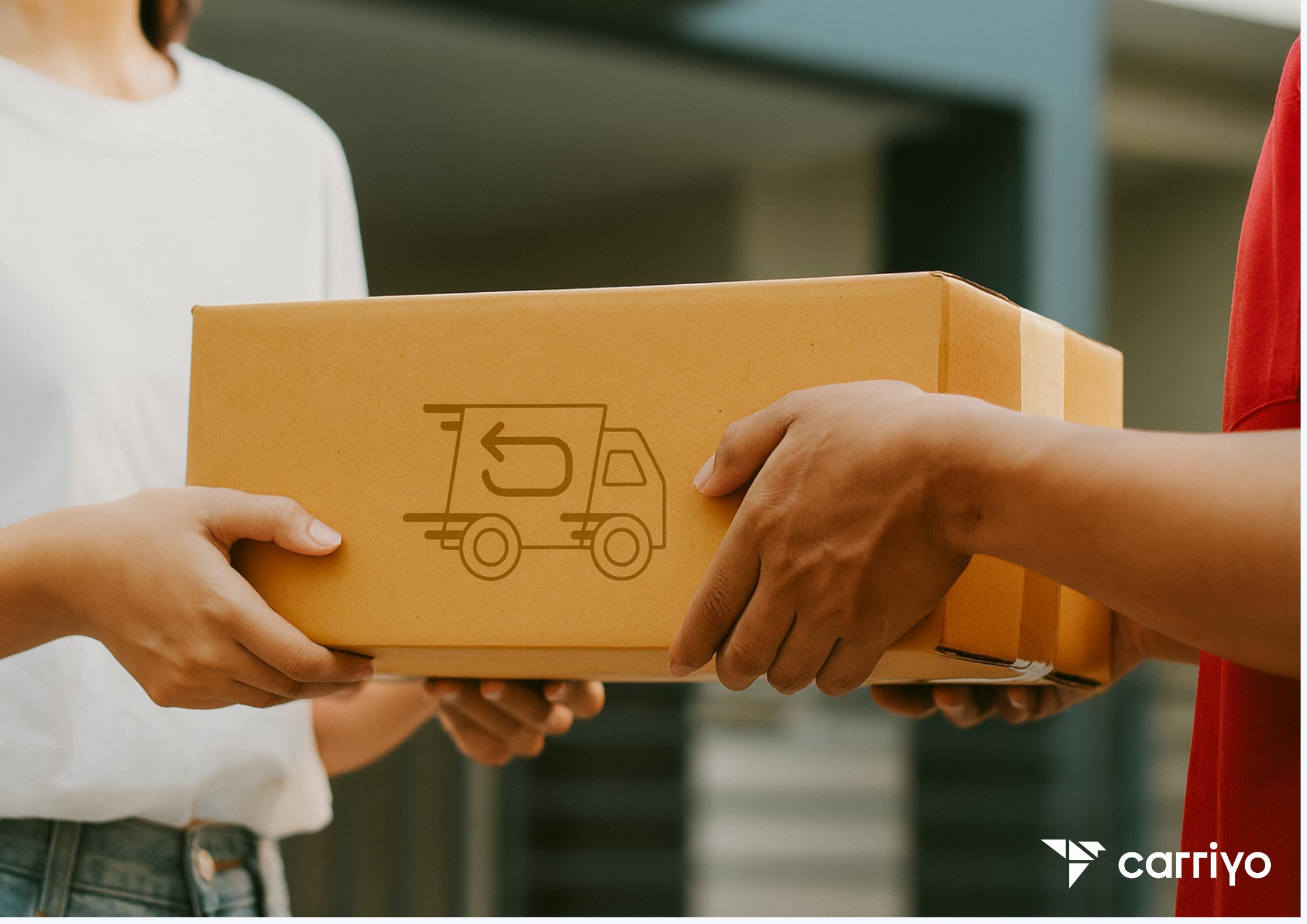
e-Commerce
Sep 6, 2025 - 5min read
ARTICLE
The Dark Side of Delivery: $12B Lost, $890B Returned — And Who’s Winning in 2025
When we think about eCommerce challenges, our minds often go straight to ad costs, rising CAC, or the endless race for faster delivery. But there’s another side to the story—one that drains billions from the industry each year and quietly erodes customer trust.
We’re talking about lost packages and product returns.
In 2024 alone:
- $12 billion was lost to package theft, affecting nearly 58 million Americans.
- Retailers faced a staggering $890 billion in returns—almost 17% of total sales.
For most brands, these issues are treated as “the cost of doing business.” But the leaders? They’re turning them into a competitive edge.
Let’s break down what’s happening, who’s adapting, and how retailers can flip the script.
1. The Lost Package Problem
Porch piracy isn’t just an occasional headline—it’s a reality for one in four U.S. consumers. The average value of a stolen package in 2024 was about $204, and the geography of theft is surprising. Urban residents face almost double the risk of rural ones (18.8% vs. 9.9%), while Kentucky tops the charts at a 12% theft rate.
For retailers, stolen or misplaced packages don’t just mean financial loss. They mean broken trust—and once that’s gone, customers rarely return.
How major players are responding
- Amazon leans heavily on Lockers and Hub pickup points, reducing exposure to porch piracy. Its A-to-z Guarantee refunds keep trust intact, while warehouse resale channels help recapture value.
- Walmart has gone one step further with its InHome Delivery program, where associates deliver directly inside homes or garages in over 50 U.S. markets.
- Target solves the problem by eliminating doorstep risk entirely. Its Drive Up service expanded nationwide in 2024, letting customers pick up curbside and even process returns in one trip.
- UPS & FedEx are adding intelligence: UPS’s DeliveryDefense AI scores addresses for risk and can reroute parcels to 16,000+ Access Points, while FedEx offers delivery flexibility through Walgreens and Dollar General.
- USPS is quietly going high-tech. Its NVIDIA-powered imaging system processes 20 terabytes of data daily to locate misrouted packages in hours instead of days.
The message is clear: prevention, secure alternatives, and smarter routing are becoming non-negotiables.
2. The Returns Black Hole
If lost packages break trust, returns break margins.
In 2024, retailers took back nearly $890 billion worth of merchandise, a jump from $743 billion the year before. While customer-friendly return policies boost purchase confidence, the downstream reality is far less glamorous:
- Only a fraction of returns go back on shelves.
- Billions of pounds of goods end up in liquidation, recycling, or landfill.
- Returns generate an estimated 16 million metric tons of CO₂ emissions annually.
It’s no surprise the U.S. liquidation industry alone was valued at $644 billion (as of 2020). Returns are a massive market—just not a very profitable one for retailers.
Brand strategies in action
- Amazon relies on Warehouse Deals to resell returned items at a discount, while “returnless refunds” are offered for low-value items where shipping costs outweigh recovery.
- Zara brought its Pre-Owned platform to the U.S. in 2024, enabling resale, repair, and donation for garments.
- H&M continues investing in circular fashion with its Global Change Award—€8M spread across 46 innovations since 2015.
- Nordstrom sticks to its famously flexible “case-by-case” return policy. It’s not the cheapest approach, but the loyalty payoff is real.
- Shein & Temu often refund small purchases without asking customers to send them back—cheaper than the reverse logistics bill.
- Best Buy runs a three-tiered program: resale, refurbishment, and recycling. Its trade-in schemes also encourage new purchases.
Returns may never disappear, but the smartest retailers are building systems that recover more value and reduce waste.
3. Who’s Turning Loss Into Loyalty?
The most successful retailers don’t see lost packages or returns as nuisances. They see them as loyalty moments.
- Amazon continues to set the standard with its end-to-end ecosystem—Lockers, Guarantees, and resale channels—earning it an 83/100 customer satisfaction score.
- Walmart is using InHome Delivery plus its 4,700+ store network as a returns powerhouse, making omnichannel flexibility a loyalty driver.
- Zalando claims that 97% of returns are resold after inspection. Even though that figure is debated, the company’s customer-centric approach helped fuel a 4.2% revenue bump in 2024.
- StockX protected its marketplace by rejecting $85M worth of counterfeits in 2024, proving authentication reduces costly returns while preserving trust.
- Sephora makes returns seamless with branded tracking and easy in-store options, turning a frustration into a store visit—and often another purchase.
The pattern is consistent: companies that treat delivery problems as opportunities outperform those that just absorb the cost.
4. Strategic Takeaways
So, what does this mean for retailers heading into 2025?
- Lost packages erode trust. Refunds help, but without secure alternatives, customers churn at 3x the rate of those who only face delays.
- Returns erode margins. Processing a $100 return costs around $27 on average—eating deep into profits.
- But leaders use these pain points as loyalty tools. Lockers, resale platforms, branded tracking, and flexible policies all turn risk moments into retention moments.
The winners aren’t the ones who eliminate losses altogether—they’re the ones who control the narrative and deliver an experience that builds confidence.
Carriyo Turns Pain Points Into Retention
At Carriyo, we’ve seen firsthand how automation and visibility can transform these blind spots into strengths:
- Automated Returns: Self-service portals and intelligent routing reduce costs while keeping customers in control.
- Branded Tracking Pages: Real-time updates reduce “Where is my return?” calls and keep customers engaged even after checkout.
- Analytics: Spot abuse, optimize refund timing, and flag high-risk SKUs before they sink profits.
- Carrier Orchestration: Choose the fastest, cheapest, or most reliable option across 100+ carriers in 27+ countries—automatically.
Customers like Level Shoes cut manual work by up to 90%, while Alshaya reduced complaints by 80% with data-driven optimization.
Conclusion
Lost and returned packages may not get the same attention as marketing spend or delivery speed, but they’re the silent killers of eCommerce growth. Together, theft and returns strip away more than $900 billion in value each year, and the impact goes far beyond balance sheets. They break customer trust, eat into margins, and generate environmental waste that brands can no longer ignore.
The retailers leading in 2025 aren’t the ones who avoid these problems altogether—that’s impossible. Instead, they’re the ones who have learned to turn setbacks into strengths. Amazon uses lockers and resale programs to protect loyalty. Walmart leverages its stores and InHome delivery to remove friction. Zalando and StockX demonstrate how bold return and authentication strategies can actually increase confidence.
The big takeaway? Every lost or returned package is a brand moment. Mishandled, it can drive a customer away forever. Managed well, it can reinforce trust and build long-term loyalty.
That’s why returns and delivery management should no longer be seen as “back-office” operations. They are front-line differentiators—the places where customers decide whether to stay with you or move to a competitor.
At Carriyo, we believe the future of logistics isn’t just about faster shipping. It’s about smarter, more transparent, and more customer-centric delivery experiences. By automating returns, personalizing tracking, and orchestrating carriers at scale, brands can cut costs, protect margins, and most importantly—keep customers coming back.
Because in 2025, the dark side of delivery isn’t just a threat. For those willing to embrace it, it’s the brightest path to sustainable growth.
Ready to take control of your returns? Contact sales or book a demo today.
01

Joao Vieira
CRO at CARRIYO
The Dark Side of Delivery: $12B Lost, $890B Returned — And Who’s Winning in 2025
Sep 6, 2025 - 5min read
02

Joao Vieira
CRO at CARRIYO
DTC Isn't Broken — It's Maturing (And Logistics Will Decide Who Wins)
Sep 5, 2025 - 5min read
03

Joao Vieira
CRO at CARRIYO
How Livestreaming Is Shaping Online Shopping in the U.S.
Sep 3, 2025 - 4min read
Automate shipping operations and elevate post-purchase customer experience
We're trusted by

